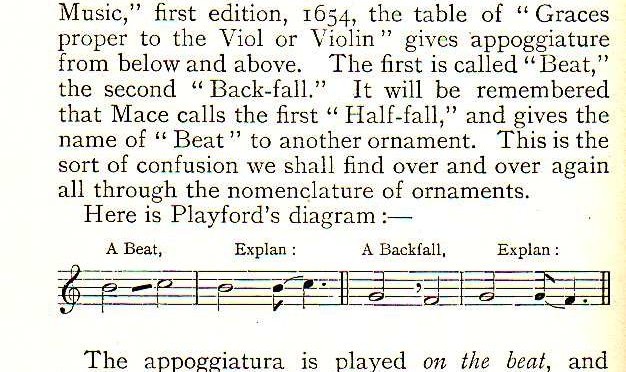One question that regularly comes up is how one deals with grace notes and ornaments. In the Gaelic harp tradition we have the system of left hand gestures published by Edward Bunting in 1840 (online edition), and in the Welsh harp tradition we have the ‘alphabet to learn the pricking’ on p.35 of the Robert ap Huw manuscript (online facsimile). These describe series of notes that are played as a single fluid connected motion, and which are often treated as ‘grace notes’ preceeding a ‘principal note’.
Two questions immediately arise; how quickly to play them, and whether the accent and stress should lie at the start of the sequence, with the principal note displaced, or whether the ‘grace notes’ should be played before the beat.
Arnold Dolmetsch, in his book The Interpretation of Music of the 17th and 18th centuries, gives copious quotations and discussion from historical treatises, on different kinds of ornamentation. Here is an extract from page 96:
And this from p.98-99:

In his book piobaireachd, Seamus MacNeill explains the piping grace notes:
The time taken in playing gracenotes is not counted when reckoning note values in a bar. They are supposed to take time from the note immediately following.
To my mind and ear, these clusters of notes have a consonantal, rhetorical function, creating a crunch of dissonance on the beat or pulse which resolves a moment later into the sustaining melody note. Playing these auxiliary notes before the beat completely removes this dissonant, consonantal sound, and replaces it with an effectively un-ornamented music filled with dance-like upbeats.
